An electric razor is quite common in today’s grooming arsenal of the modern man.
But that wasn’t always the case and the electric shaver, as we know it today, has come a very long way.
In this article we’ll take an in-depth look at the most popular electric shaver brands, see how they evolved throughout the years and what they currently have to offer.
A short history of the electric shaver
The early 1900s marked a milestone in men’s grooming as it was the time when King C. Gillette came up with a successful iteration of the safety razor.

Fast forward 20 years and Col. Jacob Schick, an American (and later Canadian) entrepreneur, was patenting the first electric shaver.
This first concept, relying on a shaving head powered by a bulky external motor, wasn’t exactly practical and also required the use of both hands.
Later iterations addressed these shortcomings by fitting all the components into a compact design.
This allowed Schick to achieve massive commercial success, selling more than 1.5 million shavers until his death in 1937.
The introduction of the micro-foil
Schick’s electric razors relied on cutters that moved back and forth, similar to the ones from a regular hair trimmer.
It was the Remington Rand Corporation which came up with first electric razor that included a micro-screen foil that covered the blades, thus vastly improving the comfort.

The design principle of the foil shavers has remained unchanged until this day.
The first rotary razor
In 1939, Philips introduced the first razor that used rotating cutters as opposed to reciprocating cutters.

This new concept proved to be very successful especially in the North American market, where Philips sold its personal care products under the Norelco brand (more on that later on).

Cordless operation
Another breakthrough came during the 1960s when the advancement in battery technology allowed the use of rechargeable batteries that were sealed inside the razor.
The first batteries were nickel-cadmium and had some serious shortcomings, the most notable being the memory effect. Nowadays most electric razors use Lithium-ion batteries.
Various manufacturers further improved the technology and design of electric razors to the point where a modern electric shaver could rival a razor blade in terms of closeness, but with the added benefit of comfort and practicality.
The most popular electric shaver brands
Let’s take a closer look at some of the most important electric shaver brands and their particularities.
Braun
One of the leading manufacturers of electric razors, Braun was founded by mechanical engineer Max Braun in 1921 in Frankfurt, Germany.
In its first 30 years of existence, the company gained notoriety for the production of high-quality radio sets and audio equipment.
During the 1950s Braun introduced what would become its most well-known product: the electric shaver.
Named the S50, Braun’s first razor featured a cutting block covered by a thin perforated foil.

The refinement of Braun’s technology and machinery allowed them to use a thinner foil than their competitors from that time (Remington and Schick), which resulted in a closer shave.
Braun continued to refine and improve the design and technology of its electric razors throughout the years: advancements in the production of perforated foils by using electrotyping instead of a punch press, the addition of a hair trimmer, the use of rechargeable batteries that allowed cordless operation, experimenting with different materials like chrome, plastic and steel, the introduction of the double shaving head and so on.
Gerd Muller and Dieter Rams are two of the names responsible for the functional and clean design of Braun products.
Another pioneering product by Braun was the Syncro System 7680 which featured an automatic cleaning and charging station, thus becoming the world’s first self-cleaning electric shaver.

The Syncro System 7680 paved the way for Braun’s current best selling models: the Series 7 line of electric shavers.
While it also manufacturers entry-level razors that are also highly popular (like the Series 3 line), the Series 7 and Series 9 are notorious for their level of performance and comfort.
Philips Norelco
 While in the foil shavers camp there are a few major players, when it comes to rotary razors things are quite different.
While in the foil shavers camp there are a few major players, when it comes to rotary razors things are quite different.
Philips Norelco is basically in a league of its own and the name is synonymous with the rotary razor.
With a rich history behind, Philips Norelco has become a cult classic and has a large community of loyal enthusiasts throughout the world and particularly in the USA.
The name Norelco also has an interesting history behind.
While Philips marketed its personal care items under the Philishave brand in the rest of the world, the Philadelphia based Philco managed to legally prevent Philips from using its brand name in the USA on the account of the two names being too similar.
Philips was forced to brand its electric shavers destined to the US market with a different name and came up with an acronym for North American Philips [electrical] Company: NORELCO.
Philips eventually bought Philco in 1981 and was free to use the Philips name, but decided to keep Norelco as the brand had gained a lot of equity in the USA throughout the years.
As of 2005, Philips started marketing its electric shavers under the Philips Norelco name in the USA.
As previously mentioned, Philips introduced the world’s first rotating shaver in 1939 when Alexandre Horowitz, a Philips engineer, came up with the idea of using rotating blades instead of reciprocating cutters.
The first Philishave razor was very basic in its function and design, had a single cutting head and its bakelite cylindrical body wasn’t particularly ergonomic.

World War II delayed the mass production of Philips electric razors until 1946 when an improved model was launched, featuring a larger shaving head and better construction.
The shape and ergonomics were still its main flaw and 1948 saw the introduction of what was then called The Egg. Ergonomics were vastly improved with the new compact body and the placement of the cutters.

1951 marked the introduction of a double head razor that proved to be very successful in the USA and eventually evolved into the triple head shaver from 1966.
Other features included the addition of hair trimmers and the flip-top cleaning system.
Another milestone worth mentioning is the implementation of the Lift & Cut system from 1980 that is still present in today’s razors.
This addition marked a significant improvement in the closeness of the shave as the hairs where lifted and cut below skin level. Also during this time, the first Philishave cordless operating razors became available.
The 90’s saw a focus on ergonomics, build quality, aesthetics and some incremental improvements in performance and features. The first waterproof shavers were also launched during this period, offering the option of a dry or a wet shave.
Nowadays Philips Norelco is a well-established name among other electric shaver brands; they also followed exclusively the rotary paradigm throughout the years and managed to continually improve their products.
Norelco’s current line of rotary shavers includes entry-level products like the Shaver 3100 and 6100 that offer excellent value for money, as well as high-end shavers like the Series 9000 Prestige.

You can also check out our recommendations for the best rotary razors from Philips Norelco.
Panasonic
 Completing the big three names in the electric shaving industry is Panasonic, formerly called Matsushita Electric.
Completing the big three names in the electric shaving industry is Panasonic, formerly called Matsushita Electric.
Panasonic was founded in 1918 by Japanese industrialist Konosuke Matsushita — hence the original name of the company — and is headquartered in Osaka, Japan.
Panasonic’s history in the manufacturing of electric razors dates all the way back to the early 50’s when the company started the production of electric shavers in collaboration with Philips.
The shavers were sold under the National brand in Japan and Panasonic for the rest of the world.
Panasonic and Philips would continue their collaboration (which resulted in both foil and rotary shavers) until the 70’s.
Panasonic’s future solo efforts in the manufacturing of electric razors would be focused entirely on foil shavers, eventually becoming one of the world’s leaders in this segment alongside Braun.
Nowadays Panasonic has a very wide selection of electric razors in its portfolio, ranging from basic shavers all the way to top of the line razors.

Pretty much all Panasonic shavers, including the budget-oriented ones, are fully waterproof and can be used for both wet & dry shaving.
They’re also easy to clean under tap water.
This used to be (and still is to some degree) a key advantage over Braun’s counterparts which were often only suited for dry shaving.

Another noteworthy characteristic of Panasonic shavers is the use of very capable motors throughout their whole range of shavers. As an example, even the most basic shavers are fitted with high CPM linear motors (10 000 – 13 000 CPM), comparable to the ones found in the high-end models.
For this particular reason, these shavers offer excellent cost and performance ratio. You can check out our reviews of Panasonic shavers here.
The cutting blades of an electric shaver are one of the key elements when it comes to comfort and closeness of the shave.

Panasonic has a long history of producing high-quality steel blades for their razors.
Their 30 degrees nanoblades are sharpened at a very aggressive angle to ensure very clean and effective cutting as opposed to regular blades.
The nanoblades are also used throughout the whole range of their current models; replacing them with a new set of blades should be carried out every 12 months to ensure optimal performance and comfort.
Remington
 Remington has to be one of the pioneers of electric shaver manufacturing that gets way too little recognition for its contribution to the development and design of the modern electric razor.
Remington has to be one of the pioneers of electric shaver manufacturing that gets way too little recognition for its contribution to the development and design of the modern electric razor.
Due to the massive market share and popularity of the big three above, Remington has unfortunately fallen behind in terms of sales, technology, and performance. But that wasn’t always the case as you’ll see.
Remington started out as E. Remington and Sons, a manufacturer of firearms and typewriters founded by Eliphalet Remington in 1816 in Ilion, New York.
The Typewriter division of the company was sold and merged with the Rand Kardex Corporation, becoming Remington Rand in 1927.
The new Remington Rand company would venture into the personal care industry and in 1937 they introduced their first electric razor, the Remington Model E Close Shaver.
Compared to other shavers from that time, Remington’s Model E had a key advantage: a thin metal foil that covered the cutting blades, providing superior comfort during the shave.
This concept would eventually be implemented by everyone and it became the foundation of today’s modern foil shaver.

The Model E featured a single shaving head and the next iteration saw the addition of a second one, resulting in the Remington Dual introduced in 1940.
A year later, a new razor was launched, featuring three shaving heads and a trimming element: the Remington Foursome.

After merging with the Sperry Corporation in 1955, Remington continued to manufacture electric razors and in 1960 launched another iconic product, the Remington Lektronic, world’s first cordless shaver.
Sperry Rand sold its electric shaver division to Victor Kiam in the late ’70s after the sales tanked in a market dominated by Norelco.
Kiam rebranded the company which became Remington Products and managed to make it profitable again by implementing a series of changes in management, product line, and marketing.
As a result, Remington’s market share doubled and the company was extremely successful worldwide during the ’80s.
The ’90s were characterized by poor sales and various attempts to revitalize the company.
Under new management, sales started to slowly and steadily increase after the year 2000.
Nowadays, Remington is still present on the electric shaving scene and its portfolio includes both foil and rotary shavers.

Unfortunately, it has fallen behind in terms of performance and reliability, especially in the high-end segment dominated by Braun, Panasonic, and Philips Norelco.
Current Remington razors are reasonably priced and offer decent performance for the money, but there are almost always better alternatives from other manufacturers, offering superior performance at even lower prices.
Remington remains however one of the game changers in the electric shaving history and their innovations contributed massively to the development of the modern electric razor.
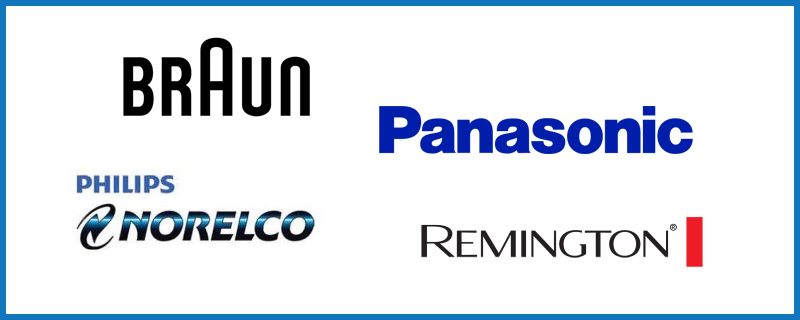

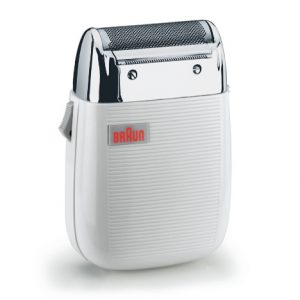
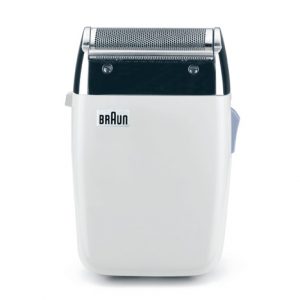
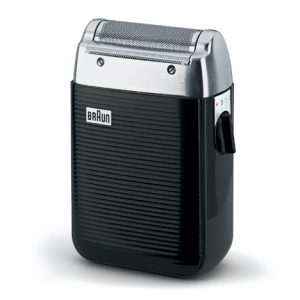
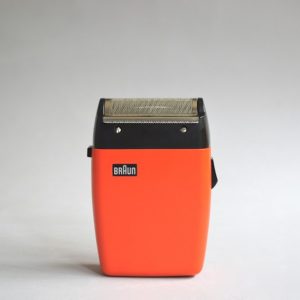
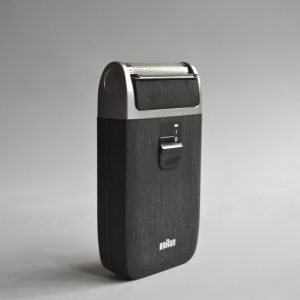
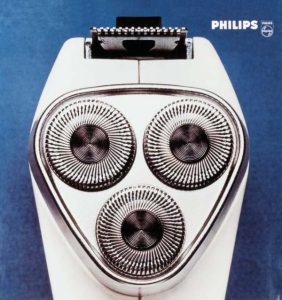
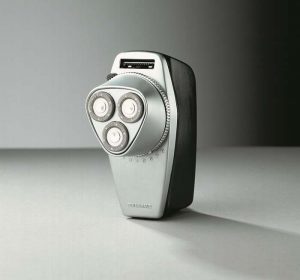
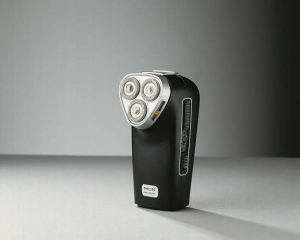
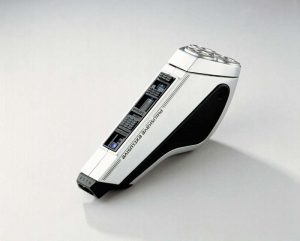
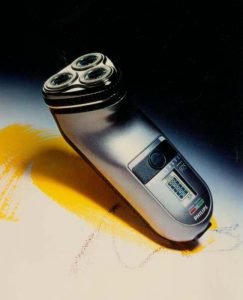

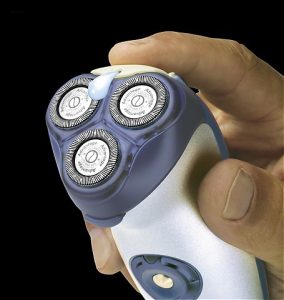
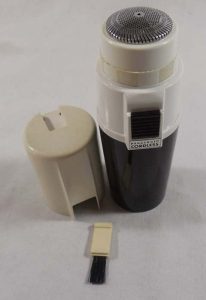
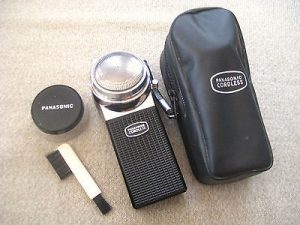
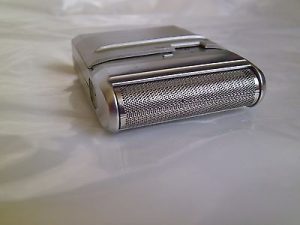
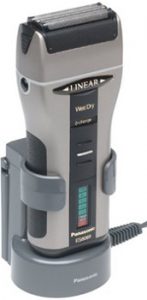
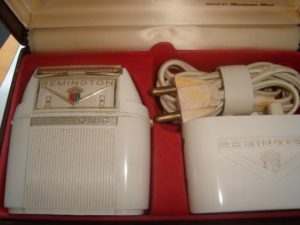
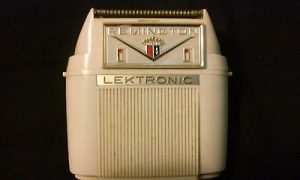
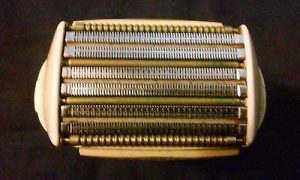
in marin county california where may I purchase a remington rand electri shaver
Does anyone know where I can find a foil replacement cover for my 1937 Remington Close Shaver Model-E?
Got a Remington letronic charger does not work if you interested
I have a Panasonic ES 811 shaver that I bought in the early 1970’s. It still works like new! A little pocket unit that runs on two AA cells. It’ll probably still work on my dying day. The other one I have is a Braun three-head rotary. It appears to be very durable as well.
Thank you for your comment, Jeff. You wouldn’t happen to know the model name of the Braun? I’m quite intrigued by it.
I also have the same model but mine is under the National brand.
Any idea where I can get a replacement foil and cutter head?
Thanks Paul
My model is the ES 811 National
Thanks Paul
I had a Panasonic electric wet/dry shaver. I bought it in 1996. After few years, the battery would not hold a charge and i tossed out. A unique feature was the plastic popup which enabled me to completely remove my groin and balls hair completely. It was better than shaving. No knicks or cuts at all. Where can I find the same shaver? Thank you for any help.
Hey,
That particular model is definitely discontinued at this point and you’ll only be able to find it used if you’re lucky, but that’s obviously not ideal. I wouldn’t recommend using any of the current shavers on your groin area as the blades on the popup trimmers aren’t beveled and they will nick and cut pretty badly.
I would opt for a dedicated body trimmer that has rounded blades and you can use it safely for manscaping. Philips has quite a few of those in their Bodygroom line, so check them out.
Sincerely,
Ovidiu
Remington is still mentioned as a major electric shaver brand, but I don’t think they make their shavers anymore. That’s done by Izumi, a Japanese OEM (and likely also an ODM). Will you be doing a piece on this little-known manufacturer? They actually have their own line-up for the Japanese domestic market.
Thank you for the comment. I don’t know with certainty if Izumi manufactures all their current shavers. I will try to get a few models, but in the past I know it’s been difficult to get them here in Europe.
hello, i’ve inherited an old single rotating blade electric shaver. the brand is National (panasonic). i cannot remember when my dad got it exactly, i remember it being a gift to him from a friend back in the early ’80s. it uses a single 1.5V type C battery. it has a simple cylindrical stainless steel body that tapers a little bit at the bottom. the bottom unscrews so that you can put the battery inside. it looks similar to a small microphone, including where the on/off switch is located.
speaking of the switch its amazing that it has a safety button that you had to press in order to manipulate the switch on or off. it kind of remind me a little bit of how a glock’s safe action trigger works. years before the glock pistol was invented.
i don’t use it as often anymore but i do occasionally. recently i had to disassemble it for the first time, because the motor stopped running. i was very careful in disassembling it because i didn’t have a manual and i don’t want to damage anything knowing the parts are no longer produced. a few squirts of good ole wd-40 inside the motor plus a little gentle persuasion and it freed right up. added a few drops of light machine oil and assembled it all up, now its working again.
the leather case and the small cleaning brush it came with is still here. the leather case is falling apart at the seams but i think i can sew it back up again…maybe. for now its stored in a more modern faux leather pouch.
i hone the tiny blades manually using a small piece of ceramic i got from a broken mug. amazing how they built things to last back then, this is AT LEAST 30 years old and still shaves. although not as well as the newer ones for sure but it does its job.
i used to bring it on trips but now i don’t, i don’t want to accidentally damage it or lose it.
thanks for the article. God bless.
Thank you for taking the time to share this, Aris. I also love the charm of vintage electric razors and I am actually planning on starting a small collection.
Sincerely,
Ovidiu
My husband has recently purchased a shaver from 1942. It’s a Remington. It was offered as an accessory to General Motors. We are looking for information. A lot of the GM collectors are asking about it. Where can we find more info? Thank you!!
I have a couple of Norelco Rotatract tripleheader shavers from the 1980 era that are both in almost new condition. They are a Ni-Cad battery rechargeable type HP 1318 and a corded use only Type HP 1601. They are early Norelcos that use the triple lobe driver spindles and heads. They originally used HQ3 heads per Philips Norelco Technical Support but current HQ56 heads still fit and work fine. Even older Philips and Norelco razors used cutters with a straight drive slot and they are apparently no longer made by anyone. A few are listed on eBay that I found at quite high prices considering their suspected original cost. No idea of the history of the HP 1318 but the fully charged battery still takes a charge and runs it for close to 50 minutes continuous. It works in corded or cordless mode.
I do not have the manual for either one and a Google web search has not turned up a PDF manual source for either, including not on the Philips USA web site which has PDF manuals for newer shavers.
Thank you for your comment, Rich. I never got the chance to use one of those and I would love to see how they compare to Norelco’s current high-end models. Lately I’ve been trying to source a few of the iconic older/vintage razors from Philips and Braun, but so far I haven’t been lucky. I’ll keep trying though.
Sincerely,
Ovidiu
I have used Norelco, Braun, and Remington brand shavers. Of the ones I used the Remington shavers performed far better, and were cheaper.
Thank you for your comment, Charles. It would be interesting to know the models of the shavers you’ve used, particularly the Remington ones.
Sincerely,
Ovidiu
I have come across an electric shaver marked BELCUT Made in Germany. It was my father-in-laws, and he would have purchased it in Germany in the 1950’s. I have tried to research it with little result. Can you help me with any information about the BELCUT company?
Hi David,
I’m afraid I can’t really help you as the information on that particular brand is very scarce. Most of their shavers seem to be made in Switzerland though, not in Germany.
Sincerely,
Ovidiu
Where can I find a shaver that is not made in China
Actually there are quite a few available. For example, most Panasonic electric shavers are made in Japan. The same goes for Philips. Braun shavers from the Series 5 and up are made in Germany, although there have been reports of them outsourcing individual components to Chinese manufacturers and then assembling the shavers in Germany.
Sincerely,
Ovidiu
Hi there, my husband recently went to a barber and they used a shaver which gave him the closest shave he has ever had. Unfortunately the barber does not know the brand and has difficulty finding similar or same shaver as she has had loads of enquiries about it.
Apparently it has both foils and a tooth style bar section combined on the one head.
Can anyone assist or may know what brand it is? Or similar.
Hubby has tender skin but thick bristles which makes for painful regular shaving with soap and razors.
Any help would be valuable. Thanks
Hi Susie,
I’m afraid I cannot tell which exact model was that from your comment alone. A picture would have been a lot more helpful. Most foil shavers have a trimmer-like element (or more) apart from the foils themselves. Here are two articles that you may find useful in choosing a shaver for your husband:
Sincerely,
Ovidiu
I have a Philishave bought in Scotland probably around 1972. It lay in a drawer from 1975 until I used it today (April 2022), was probably used three times at most in the 70’s , and today worked like a new product. (Stamped of course ‘Made in Gt. Britain’).
I have the gleaming white original box, with the ‘Introduction’ booklet and the ‘Philips Philishave International Guarantee’ booklet, in twelve languages, with the names of dealers in sixty-three countries! The serial number is 34408560. Those were the days!
Wow, that is awesome, Archie, would love to try a pristine vintage shaver sometimes. Never had the chance so far. Enjoy your Philipshave!
Sincerely,
Ovidiu
I have a Philips Norelco SpeedShaver 300SX and Philips refuses to tell me when it was made. Can anyone tell me what year it was made in? It does have the Lift and Cut razors. It is a dual headed shaver. I would have guessed late 80s early 90s. It says to replace with heads NR 1915. Can’t find anything about it online anywhere. Any information anyone has would be great! Thank you!
Hi,
I only know about the two-headed SpeedShaver Norelcos from the ’60s and those definitely didn’t have Lift&Cut blades (only shavers from the ’80s and later have them). I couldn’t find anything about a SpeedShaver 300SX — can you share an image of the shaver/model name? It was most likely made in the ’80s.
Sincerely,
Ovidiu
Jean-Marc MÜLLER
15 août 2022.
Bonjour,
Philips n’est pas l’inventeur du rasoir électrique à tête rotative; avant il y a eu le Rotoshaver fabriqué par Packard (15 01 1938), le Ronson (9 02 1938), le Casco (26 02 1938). Philips est venu après en 1939.
Hello,
Many thanks for the info, that’s really interesting. I will be digging more into this and I’ll update the article.
Sincerely,
Ovidiu
I began to shave around 1950 and soon got a Philips egg,a one headed razor and have used Philips since.I have got a new series 1000 today.I read some comments about it before buying and some were negative I want to say that this is the best saver I have ever used and I am looking fwd to the morning and a shave,pleasant and close
Thank you so much for taking the time to share this, John. I think it only goes to show how much modern shavers have evolved — at least in terms of shaving performance — compared to the ones back in the day. The Series 1000 is the most basic Philips you can currently get (except for the two-head travel razor), but even so, it seems like a big step up.
Sincerely,
Ovidiu
i have a stafford shaver model 4082-1. curious when it was produced and what it is worth.
I’m afraid I don’t have any info on that particular model and brand.
Sincerely,
Ovidiu